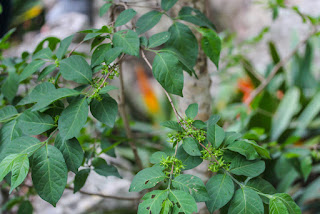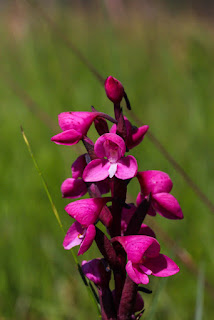Walkers from far and wide started gathering at Clearwater early on Sunday morning to celebrate the life and botanical work of Tony Abbott. After many had breakfasted on egg and bacon rolls at the cafe, the walkers were gathered at the viewing deck overlooking the Umtamvuna River gorge to be told a little about Tony Abbott, about the plants of the Pondoland Centre of Endemism that they would be see, and about the routes available to them. Before the start there was a draw for the raffle prize of a botanical painting of a Clivia mineata - one of the plants likely to be encountered along the walk -- and the lucky winner was Audrey Woodley.
 |
| Some of the 60+ walkers at the start of the memorial walk |
 |
| Elsa Pooley and Audrey Woodley at the start of the memorial walk |
 |
| Audrey Woodley, winner of the painting with Kate Grieve, the artist |
The more adventurous walkers headed off to walk the Fish Eagle trail while others restricted their efforts to enjoying the flowers in the grasslands along the escarpment, including a detour a short distance into the Umtamvuna gorge to see the small colony of Clivia mineata plants amongst the rocks.
By late morning the last of the walkers had returned and many enjoyed a lunch at the cafe. A well attended and successful walk on a clear and warm spring day. Thanks to all those who came to support the event!












































































